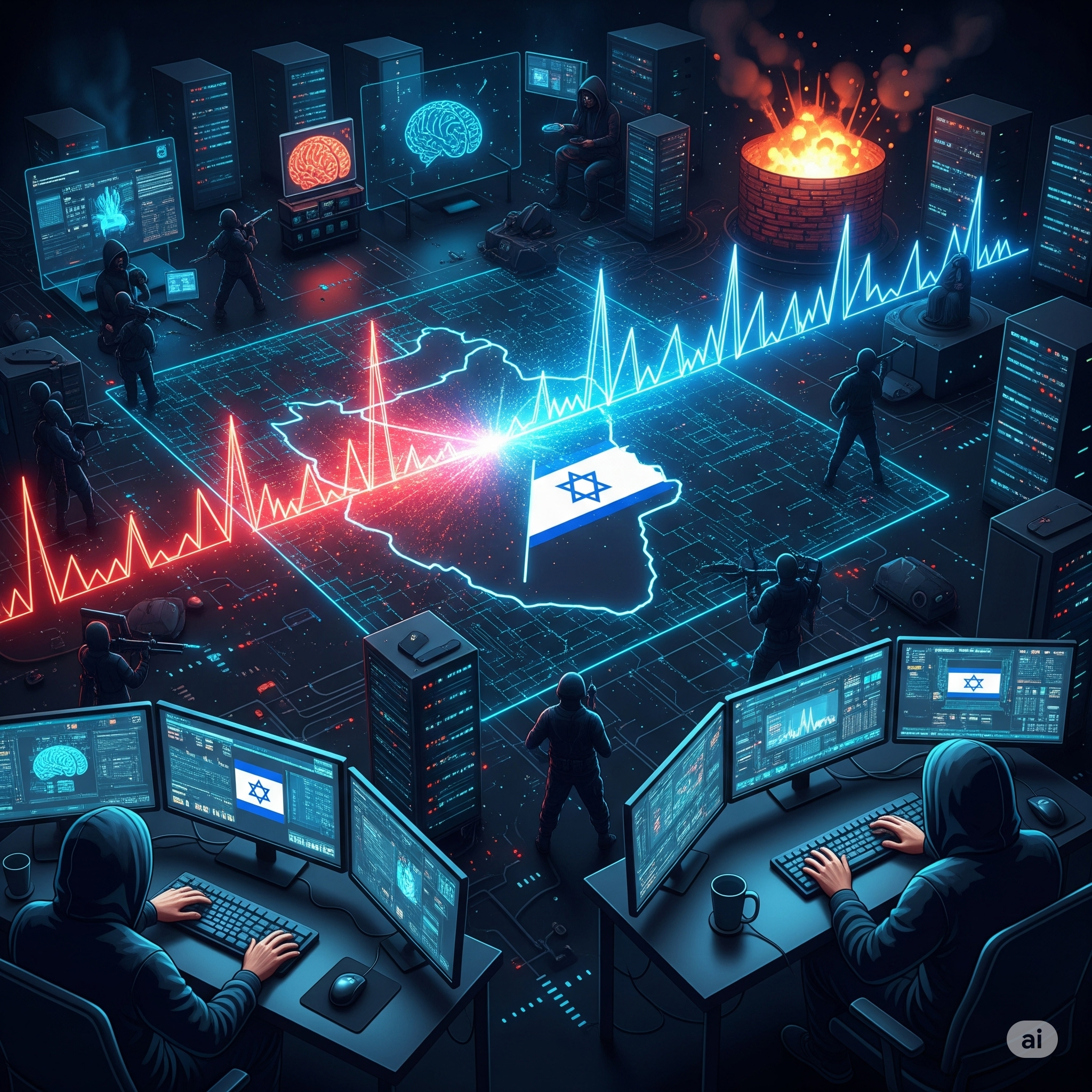A Silent War in the Shadows
While bombs, missiles, and military standoffs dominate headlines, another war is being fought in silence—in code, servers, and circuits. This is the Israel-Iran cyberwar, a digital battleground of espionage, sabotage, and covert retaliation. Unlike conventional warfare, these attacks rarely get caught on camera, but their consequences can be devastating and global.
In 2025, the conflict between these two Middle Eastern powers has intensified in cyberspace, with both sides deploying increasingly sophisticated tools to target infrastructure, financial systems, and each other’s military networks.
But what’s really happening beneath the surface? Let’s break down what most media don’t report.
🇮🇱🆚🇮🇷 A Brief History of the Cyber Feud
🔙 Origins: Stuxnet (2010)
The first major sign of this digital battle came with Stuxnet, a worm allegedly developed by Israel and the U.S.
- It physically damaged Iranian nuclear centrifuges at Natanz.
- Set a global precedent for cyberweapons that can harm real-world infrastructure.
Stuxnet wasn’t just a technical marvel—it was a geopolitical message: cyber weapons can be more powerful than bombs.
⚔️ 2010–2020: Escalation and Retaliation
Iran’s Response:
- Formed a cyber army under the Islamic Revolutionary Guard Corps (IRGC).
- Launched attacks on:
- U.S. banks and energy firms.
- Israeli civilian targets via proxy groups.
Israel’s Response:
- Formed Unit 8200, one of the world’s elite cyber intelligence teams.
- Expanded cyber operations to surveillance, disinformation, and defense.
🔥 2021–2025: From Covert to Semi-Public
Both sides no longer deny involvement, shifting tactics to digital power projection.
⚠️ Notable Attacks:
| Year | Incident | Alleged Actor | Impact |
|---|---|---|---|
| 2021 | Rail system disruption in Iran | Israel | Caused travel chaos, hacked messaging |
| 2022 | Israeli water systems attacked | Iran | Attempted chemical manipulation |
| 2023 | Hacktivist group “Gonjeshke Darande” hits Iranian gas stations | Israel-linked | National fuel panic |
| 2024 | Mossad data breach claimed by Iranian hackers | Iran | Intelligence exposure |
📢 These aren’t just cyber incidents—they are acts of war without formal declarations.
🧠 How the Cyberwar Works: Tools, Tactics & Targets
Unlike kinetic warfare, cyberwarfare operates on asymmetry and stealth. Here’s how both sides play the game:
🕳️ 1. Zero-Day Exploits
- Vulnerabilities unknown to software vendors.
- Used to silently infiltrate systems before anyone knows they’re broken.
👤 2. Social Engineering & Phishing
- Fake emails, messaging apps, and login portals to breach human firewalls.
- Iran reportedly uses LinkedIn honeypots to spy on Israeli scientists.
📡 3. Infrastructure Targeting
- Electric grids, water supply, hospitals, and public transportation are frequent targets.
- Designed to cause civilian panic without firing a missile.
📱 4. Disinformation Campaigns
- Fake social media accounts to spread false narratives.
- Used heavily during Iranian protests and Israeli elections.
🧬 5. AI & Machine Learning
- Both nations reportedly deploy AI to:
- Automate attack detection and retaliation.
- Analyze traffic for espionage.
- Target vulnerabilities faster than humans can respond.
🏦 Civilian Targets: The New Frontline
This cyberwar doesn’t stay in military domains.
🔌 Critical Infrastructure
- Water plants, oil rigs, and energy grids have all been targeted.
- Even hospitals have experienced ransomware attacks traced back to state actors.
🏛️ Government Institutions
- Israel’s Ministry of Defense, Iran’s Atomic Energy Agency, and more have seen repeated breaches.
👩💻 Private Sector & Startups
- Cyberattacks on Israeli and Iranian startups are rising, often with the goal of intellectual property theft.
🔐 It’s not just about politics anymore—it’s about data, innovation, and disruption.
🌍 Global Impact: Why the World Should Care
🧯 1. Escalation Risk
Cyberattacks may provoke real-world retaliation:
- An attack on a hospital may trigger a missile strike.
- NATO or other allies could be pulled into escalation.
🌐 2. Internet as a Battlefield
With cloud-based infrastructure, malware can unintentionally spread across borders.
💼 3. Cyber Mercenaries & Proxies
Both nations outsource attacks to non-state actors:
- Hacktivist collectives.
- Private groups with plausible deniability.
This tactic blurs lines of accountability and makes attribution harder.
🔍 What the Media Often Misses
It’s Not Just About Hacking
- Cyber psychological operations (PsyOps) now play a role in undermining morale and political trust.
Attacks Don’t Always Leave a Digital Fingerprint
- Many breaches are discovered months or years after they happen.
Attribution Is Politicized
- Nations often blame rivals for domestic failings or use attacks as justification for crackdowns.
🛡️ How Israel and Iran Are Preparing for Future Cyberwarfare

🇮🇱 Israel
- Expanded Unit 8200 and partnered with private defense firms.
- Created cybersecurity hubs in Tel Aviv and Beersheba.
- Collaborates with allies like the U.S. and NATO for intelligence sharing.
🇮🇷 Iran
- Built a domestic internet firewall to limit Western influence.
- Strengthened ties with Russia and China in cybersecurity tech.
- Trains cyber militia units through the IRGC and allied groups.
🔭 The war is global, but the command centers are becoming more secretive, resilient, and aggressive.
🔮 The Future: What Comes Next?
⚙️ 1. AI-Enhanced Cyber Attacks
- Real-time decision-making, deepfake phishing, and automated counterattacks.
🌐 2. Cyber Alliances & Cold Wars
- Nations may form digital pacts, much like military ones.
🛑 3. Cyber Geneva Convention?
- There are calls for a global treaty on cyber ethics, especially regarding hospitals, media, and elections.
But trust and verification remain the biggest roadblocks.
🧠 Final Thoughts: The Silent Danger
The Israel-Iran cyberwar is not a subplot—it’s a core battlefield of 21st-century conflict. It’s invisible but impactful. Silent but systemic. It challenges the definitions of war, peace, and diplomacy.
And as AI, quantum computing, and cyber weapons evolve, the world must prepare for a future where battles are fought not with bullets, but with bytes.
🕶️ What you don’t see on the news is just the beginning.









+ There are no comments
Add yours